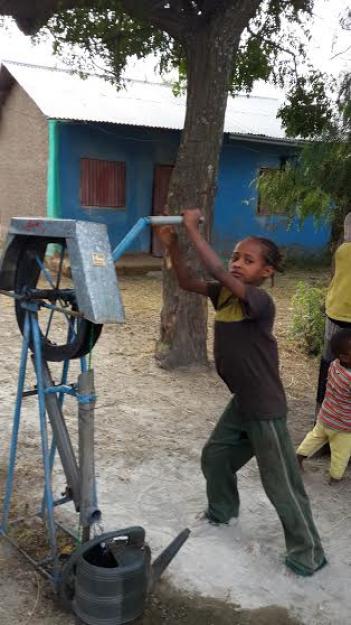Ethiopia has adopted Self-supply as a service delivery model for rural water supply to help achieve universal access and reach improved service level targets. But the jury is still out on whether the currently pursued group-based Self-supply version can deliver what is intended.
Published on: 02/12/2015
Ethiopia under its second Growth and Transformation Plan (GTP II) has embraced the Self-supply approach as one service delivery model for rural water supply. Household-financed water supply systems in the form of hand-dug wells and water harvesting structures are very common in many places in Ethiopia, although these have not been systematically supported by government or NGOs until recently.
Now, with the adoption of the Self-supply model, the aim is to provide a range of technology packages on source development, construction, water lifting and treatment methods to households, to engage the private sector, and create links with micro-finance institutions to provide affordable loans. The end is a multiplication and upgrading of traditional Self-supply systems towards meeting universal access targets and improved service levels.

Why promote Self-supply?
The rationale for promoting self-supply is clear enough. It is about improving cost effectiveness, sustainability and service levels. Self-supply helps to tap into additional sources of finance, household's own investment, to promote more water supply in an environment where public and NGO/donor financing is constrained. The initial investment required from households can be minimal, depending on their ability to pay, while upgrading the system and incremental improvements are possible as their income allows.
Self-supply schemes can be sustainable because they are managed and operated at household level. Households have more at stake to ensure sustainability due to the investment they put into the schemes and they have the knowhow needed to operate the schemes. Self-supply also makes water available closer to home, enabling households to access a greater quantity of water and at their own convenience. Ease of access also enables using the water for multiple purposes, including productive uses, such as, household irrigation, in addition to drinking and hygiene and sanitation uses.
Accelerated Self-supply
Ethiopia's current implementation of accelerated Self-supply, introduces something new: a group-based Self-supply approach. Here, a group of 10 or more households come together and jointly develop a so called Self-supply system, receiving government subsidy amounting up to 50% of the total cost of the scheme construction. On the other hand, households constructing their own Self-supply system individually are not entitled to subsidies.
The group based Self-supply approach has become quite popular enjoying local government and NGO support. In the past couple of years, some regions of the country such as Oromia and SNNP have started reporting development of thousands of group based self-supply systems, including hand-dug wells fitted with hand pumps and spring developments. Private sector organizations supplying products and services for self-supply have reportedly mushroomed.
Group Self-supply vs household Self-supply
Encouraging as these reports are, they also leave a lot of questions unanswered. Do group Self-supply schemes have higher per-capita costs compared to household Self-supply systems because they use relatively high cost technologies? Does this in turn compromise the cost-effectiveness argument for self-supply? Will the benefits of higher service levels i.e. reduced distance traveled to get water, more litres per capita per day and multiple uses become diminished in group Self-supply compared to household-level access? Are water bureau staff at region and woreda levels motivated to promote group self-supply over household Self-supply as the former is more easily counted in access/coverage figures and is easier to implement within current constraints?
IRC, as part of its support to accelerated implementation of Self-supply in the country, is trying to find the answers to these questions through a study supported by the Millennium Water Alliance. Shading more light and understanding of the current implementation of the group Self-supply approach and its various advantages and disadvantages is considered important to inform future development of the national Self-supply implementation.
We would interested in hearing from any agencies or individuals with a view about group-led Self-supply, and early in 2016 will be publishing our research findings here.
At IRC we have strong opinions and we value honest and frank discussion, so you won't be surprised to hear that not all the opinions on this site represent our official policy.